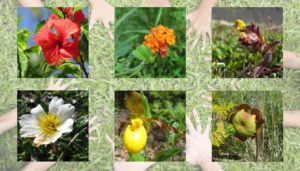MEE and You

To view the photo-rich magazine version, click here.
Originally appears in the Winter 2022 issue.
By Todd Beasley
Editor’s Note: If you’ve been keeping track of our running Finding Common Ground sub-series, you’ll know that we decided to launch it in response to the deepening polarization seemingly dominating discourse these days, especially online. Our hope is that you will find in these articles ideas whose exploration can unify us in a spirit of collaborative inquiry. It can be uncomfortable and challenging at times to grapple with difficult truths and the emotions they provoke. But perhaps, as many wise folks have remarked, those items which challenge us are the ones most worthy of our attention. In Episode 18 of Talking with Green Teachers, Karen Lai, who is the City of Vancouver’s Accessibility Planner, spoke of the messiness and complexity of accommodating many-layered people in outdoor activities. Among her numerous helpful insights is the notion that honest, open dialogue among all participants is key. This doesn’t mean that the path forward will be stumble-free — it rarely is! — yet Karen reminds us that it can often end up being rewarding and sometimes even fun to “figure things out” together. For what it’s worth, that’s largely been my experience.
Regular contributor Todd Beasley has put a lot of work into understanding and applying the tenets of multicultural environmental education (MEE), particularly as it relates to non-profit organizations like botanical gardens. His ideas come very much in the spirit of collaborative inquiry. Rather than purporting to have “all the answers,” he’s inviting further exploration by offering several entry points to discussion — discussions that we encourage you to continue in your respective circles.
There is a sense of urgency connected to environmental education as a result of the history-making Black Lives Matter movement and the ongoing COVID-19 pandemic. Individually, the two appear to be disconnected; however, with the unprecedented surge in gardening and recreational visits to natural sites, the two are very much connected. One of the plausible explanations for this is the resurgence of critical social topics such as diversity, inclusivity, and accessibility in the outdoors as well as environmental injustice. As many social science researchers have argued, the environmental movement has not been particularly diverse.
When thinking about the best strategies for building environmental education programs — which include nature-based campus gardening as well as outdoor education programs at schools and non-profits — related questions often arise. More often than not, these questions relate to the lack of diversity in boards, leadership, staffing, and sometimes even volunteers and patrons. While diversity in nature-based outdoor activities has certainly grown, further increasing inclusivity, diversity, accessibility, and equity are still of high concern. Two very common questions include, How can we avoid ‘tokenizing’? and, How can we create a culture that is welcoming?
This content is restricted to subscribers only.
If you are not yet a subscriber, please consider taking out a subscription here.
If you are an existing subscriber, kindly log in or contact us at info@greenteacher.com for more information.










